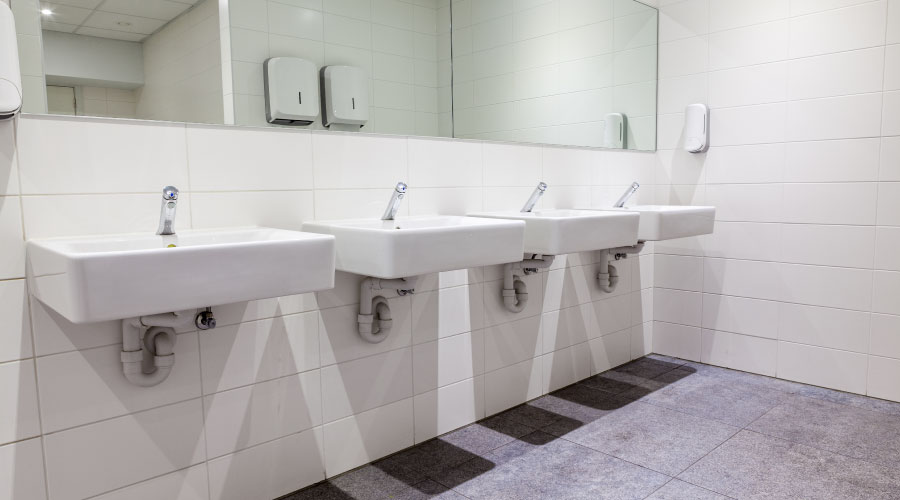Occupancy, Seasonal Changes Affect Restroom Maintenance
How can managers ensure these efforts succeed? Even with the best cleaning program and periodic PM, managers must be ready to adapt to changes.
For example, the program might work, until seasonal weather changes occur. If humidity and temperature are high with little air circulation — if no doors or windows are open and no air conditioners are running — buildings can experience sudden, new mold growth.
In closed spaces occupants subsequently re-open, new mold can cause medical problems due to the release of mycotoxins, which can lead to health problems, ranging from skin irritation to serious reactions and even death. Also resulting are additional cleaning products and services expenses, property damage, and even lawsuits to pay for remedial action.
Restrooms can be particularly susceptible to such problems if excess moisture is present from leakage. The preventive solution to this unexpected situation is to back up good conservation, hygiene and maintenance with testing. Testing both air and surfaces should be included. Microbes are invisible to the naked eye. Even in the best-maintained facilities, they can grow quickly and become hazardous to health.
The solution is to monitor hygiene by using indoor-air-quality samplers for the air and swab for surfaces. One tester records the level of adenosine triphosphate, a molecule in all animal, bacterial, plant, mold, and yeast cells.
Additionally, services exist that offer lab testing of samples collected on site. These lab services provide the independent back-up to in-house checks and certification necessary to ensure in-house testing is thorough enough, and that the facility meets owner, management, and user expectations.
User comfort, safety and health should be in the forefront of the post-installation considerations to ensure products and systems are maintainable and deliver the intended benefits of greater user satisfaction, longer life cycles, and lower costs.
Thomas A. Westerkamp — is a maintenance management consultant and CEO and managing partner of Productivity Network Innovations LLC.
Related Topics:















